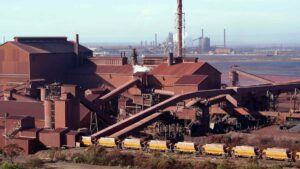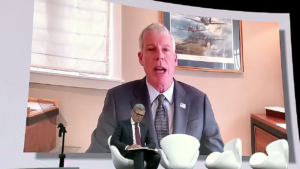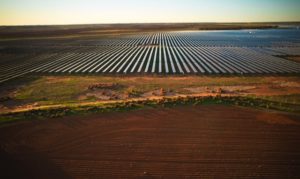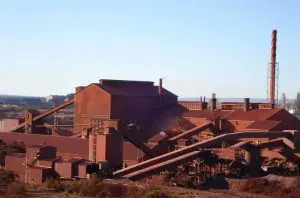The 270MW Sapphire wind project near Glen Innes in northern NSW will proceed to construction, after securing up to $120 million in debt finance from the Clean Energy Finance Corporation on Monday.
The CEFC said on Monday that its commitment to the $588 million project – the fifth and final winner of the ACT government’s large-scale wind reverse auction – would both demonstrate the bankability of large-scale renewables projects in Australia and help allay concerns about merchant risk; a key concern as a number of the nation’s biggest wind and solar projects look to the merchant market.

Sapphire is minority-owned by project developer CWP Renewables, and co-financed by Commonwealth Bank, Sumitomo Mitsui Banking Corporation and EKF, Denmark’s export credit agency, while Partners Group has provided most of the equity funding.
And while CWP has secured a 20-year feed-in tariff from the ACT government for 100MW of the project’s output, the remainder will be traded on a merchant basis.
As we have reported here often, long-term PPAs for large-scale renewable energy projects in Australia – and particularly for wind farms – have been thin on the ground in Australia, since the Abbott-era federal government policy changes put the sector under a cloud of uncertainty.
Three years on, and despite the locking in of a bipartisan national renewable energy target, the paralysing effect this had on industry growth is still being felt.
In June, the (out-going) chief of Australian wind energy developer Infigen said that securing a PPA for wind energy in Australia was “still very difficult”, with the market for a 10 year off take contract “still very thin”.
“Why is there not more contracting? From the large obligated parties … they seem to have a strategy at the moment of just simply passing through the higher costs to their customers,” George said in answer to a question from an analyst. “And that is reflected in … more customers coming to people like us for their supply.”
It was also reflected in the growing spread between contract prices and merchant prices, George said.
But the CEFC said on Monday that the Sapphire debt finance package demonstrated the bankability of those large-scale renewables projects that did not have 100 per cent energy off-take agreements through long-term power purchase agreements (PPAs).
“In order to achieve Australia’s Renewable Energy Target, we need to see the accelerated development of many more large-scale renewable energy projects in the near term,” said CEFC wind sector lead Andrew Gardner in a media statement.
“This means financiers and developers are increasingly required to support projects which have an element of merchant risk to augment any PPAs.
“Project financing for large-scale greenfield renewable energy assets has generally seen a reluctance to take on price or merchant risk. With this area of financing still evolving, we have been pleased to work alongside other commercial financiers in the Sapphire project to help demonstrate the bankability of such projects and give confidence to other developers seeking finance for projects which have an element of merchant risk,” Gardner said.
CWP Renewables managing director Alex Hewitt said his company was “excited” to see its second wind project in NSW proceed to construction.
“The commencement of this landmark project reinforces our track record of delivering excellent wind farm projects, following the successful delivery of both Boco Rock Wind Farm in southern NSW and Fantanele Wind Farm, the largest onshore project in Europe at the time of construction.”
CEFC transaction lead Bobby Vidakovic said he believed the wind farm’s development would contribute to a stronger wind industry in Australia, through local employment in the construction phase and with the use of high performing technology solutions.
“As a result of this project we are pleased to see that CWP will also be able to expand both its asset management team and its microgrid development business,” Vidakovic said.
“We are also helping to build industry capability and advance improvements in technologies through this project. The wind farm’s transformers are being manufactured by the Wilson Transformer Company, Australia’s largest manufacturer of power transformers.”
As well as being one of Australia’s biggest wind farms, Sapphire is also notable for being the first in Australia to use the new Vestas V126 3.6MW turbine, which has one of the best available rates of energy production per turbine; and for its planned contributions to a Community Fund at the rate of $2,500 per turbine per year over the life of the project.
A consortium between Vestas and Zenviron will deliver the project, with Vestas supplying and commissioning the turbines, and Zenviron delivering the balance of plant. TransGrid will build, operate and maintain an on-site substation connecting the Sapphire project to the national energy grid.










